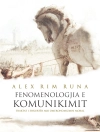In the face of climate change, the destruction of biodiversity or genetic experimentation, Bio Art appears as a form that is most directly grappling with the problems of the »Anthropocene«. It develops many different approaches and explores a variety of mediums, often related to scientific research, creating art that uses plants, insects, mammals, bacteria, bird songs, forest sounds, or genetic modification. Bio Art’s uniqueness comes from incorporating, rather than just representing the living in a diverse range of artworks. In discussing such works from various world regions and time periods, the contributors address the divide between human and non-human animals, between »culture« and »nature«.
Sobre o autor
Klaus Weber, geb. 1960, lehrt seit 2011 an der Europa-Universität Viadrina Frankfurt (Oder) Europäische Wirtschafts- und Sozialgeschichte, mit einem Schwerpunkt auf den kolonialen Verflechtungen Zentraleuropas in der Frühmoderne. Er arbeitet außerdem zu globalen Transfers konservativer Ideologien in der Moderne.












